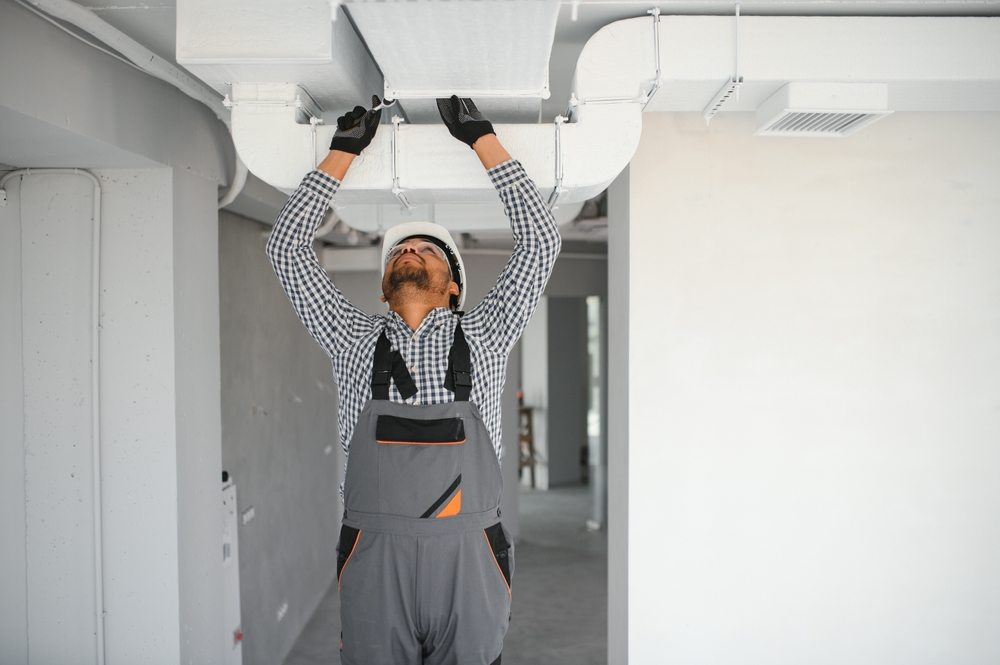Ensuring clean and sanitized air ducts is crucial for maintaining a healthy indoor environment. The EPA recommendations for duct sanitizing provide valuable insights into maintaining air quality in homes and businesses. By following these guidelines, property owners can safeguard against potential health issues and improve the efficiency of their HVAC systems. This article explores these recommendations in detail, offering practical advice for both homeowners and business proprietors looking to enhance their indoor air quality.

Understanding the Importance of Duct Sanitizing
The Environmental Protection Agency (EPA) emphasizes the significance of maintaining clean air ducts to ensure optimal indoor air quality. Duct sanitizing involves thorough cleaning and disinfecting of the air ducts within heating, ventilation, and air conditioning (HVAC) systems. This process helps eliminate dust, allergens, and other contaminants that can accumulate over time.
The Role of Air Ducts in Indoor Air Quality
Air ducts play a vital role in circulating air throughout a building. Over time, these ducts can accumulate dust, debris, and even mold, which can affect the quality of the air circulating within a home or business. By adhering to EPA recommendations for duct sanitizing, property owners can help ensure their indoor environments remain clean and healthy.
When Should Ducts Be Sanitized?
One of the key considerations in maintaining duct cleanliness is determining the appropriate times for sanitizing. The EPA provides guidelines on when to consider duct cleaning, including:
- Visible mold growth inside ducts or on other components of the HVAC system.
- Rodent or insect infestations within the ducts.
- Excessive amounts of dust and debris released into the home from the supply registers.
For more detailed guidance, visit the official EPA website.
Signs You Need Duct Sanitizing
Recognizing when your ducts need attention can prevent long-term issues. Some signs you need duct sanitizing include unusual odors, visible dust, and an increase in allergy symptoms among residents or employees.
Methods of Duct Sanitizing
There are several methods recommended by the EPA for effective duct sanitizing, each with its own advantages:
UV Light for Duct Sanitizing
Utilizing UV light for duct sanitizing is an effective way to eliminate microorganisms and improve air quality. UV lights are installed within the HVAC system to continuously disinfect the air as it passes through.
Chemical-Free Duct Sanitizing
For those concerned about chemical exposure, chemical-free duct sanitizing options are available. These methods use natural cleaners and mechanical techniques to clean the ducts without introducing harmful chemicals into the environment.
Benefits of Following EPA Recommendations
Adhering to the EPA recommendations for duct sanitizing offers numerous benefits, including improved air quality, enhanced HVAC efficiency, and reduced health risks associated with poor indoor air. By investing in regular duct maintenance, property owners can protect their investments and promote a healthier environment for occupants.
Improved HVAC Efficiency
Clean ducts allow for better airflow, reducing the workload on HVAC systems. This can lead to lower energy consumption and extended system lifespan.
Health Benefits
By removing contaminants from the air ducts, residents and employees are less likely to experience respiratory issues and allergies, leading to better overall health.
Common Misconceptions About Duct Sanitizing
There are several myths surrounding duct sanitizing that can lead to confusion. Understanding these misconceptions can help property owners make informed decisions about their duct maintenance.
Difference Between Cleaning and Sanitizing
Its important to understand the difference between cleaning and sanitizing. While cleaning removes visible dirt and debris, sanitizing goes a step further, targeting and neutralizing harmful microorganisms.
Mold in Air Ducts
Many believe that mold is always visible, but it can often be hidden within ductwork. Addressing mold in air ducts is crucial for maintaining a healthy indoor environment.
Best Practices for Duct Maintenance
In addition to regular sanitizing, there are several best practices to follow for maintaining clean and efficient air ducts:
- Regularly replace air filters to prevent dust buildup.
- Schedule professional inspections to identify potential issues early.
- Keep the surrounding areas of air vents clean to prevent debris from entering the system.
Choosing the Right Professionals
When it comes to duct sanitizing, selecting qualified professionals is essential. Ensure the service provider is experienced, licensed, and follows EPA guidelines. This will guarantee that the job is done effectively and safely.
Conclusion
Maintaining clean air ducts is a critical component of ensuring a healthy indoor environment. By following EPA recommendations for duct sanitizing, property owners can significantly improve their indoor air quality, enhance HVAC efficiency, and protect the health of all building occupants. Regular maintenance and professional assistance are key to achieving these benefits.

Frequently Asked Questions
How often should air ducts be sanitized?
It is generally recommended to sanitize air ducts every 3 to 5 years, or more frequently if there are specific concerns such as mold or infestations.
Can I sanitize my air ducts myself?
While basic cleaning can be done by homeowners, professional duct sanitizing is advised to ensure thorough cleaning and adherence to EPA standards.
Are chemical sanitizers safe for air ducts?
Chemical sanitizers can be safe when used correctly, but it’s important to choose products that comply with EPA guidelines to avoid potential health risks.
This article contains affiliate links. We may earn a commission at no extra cost to you.